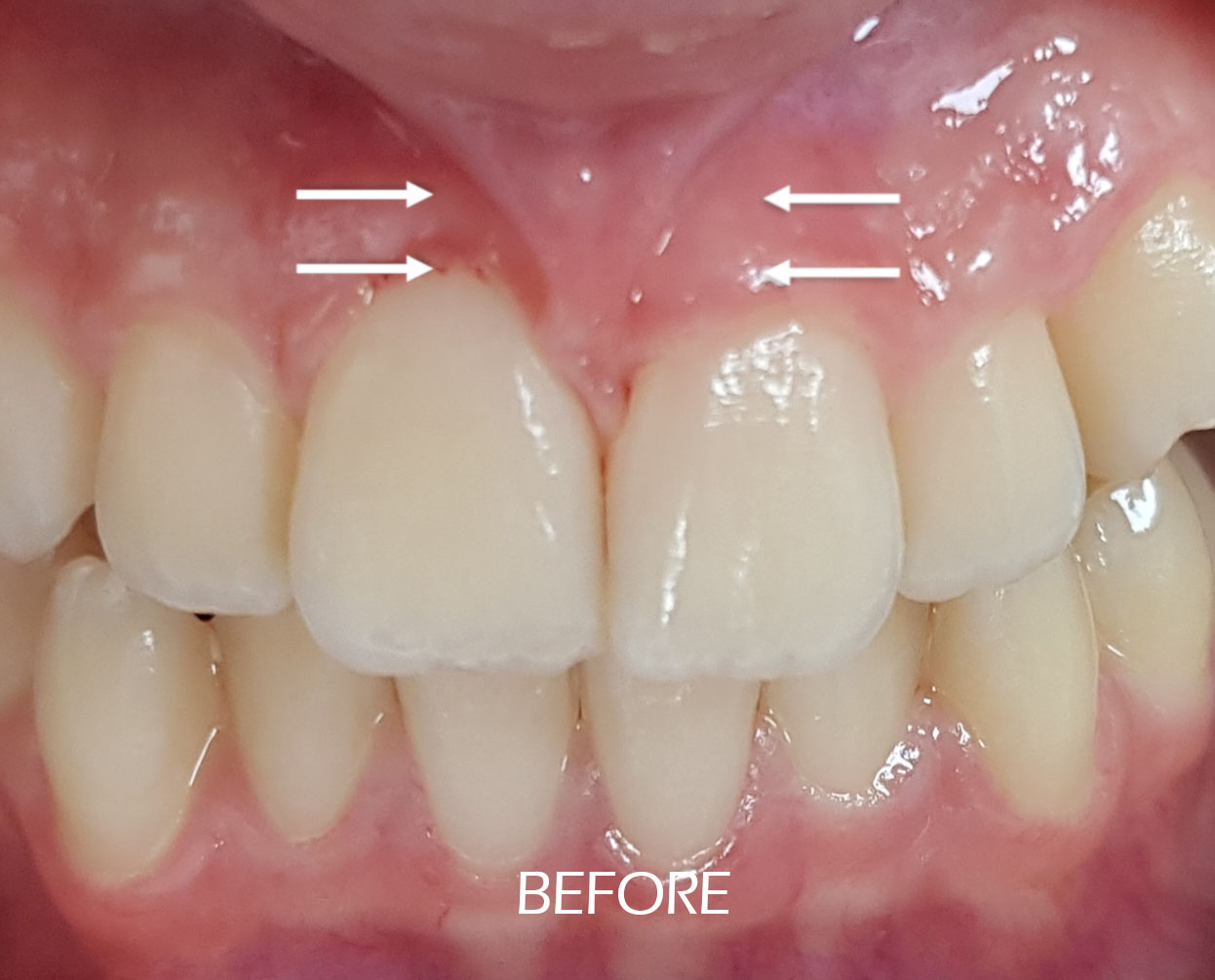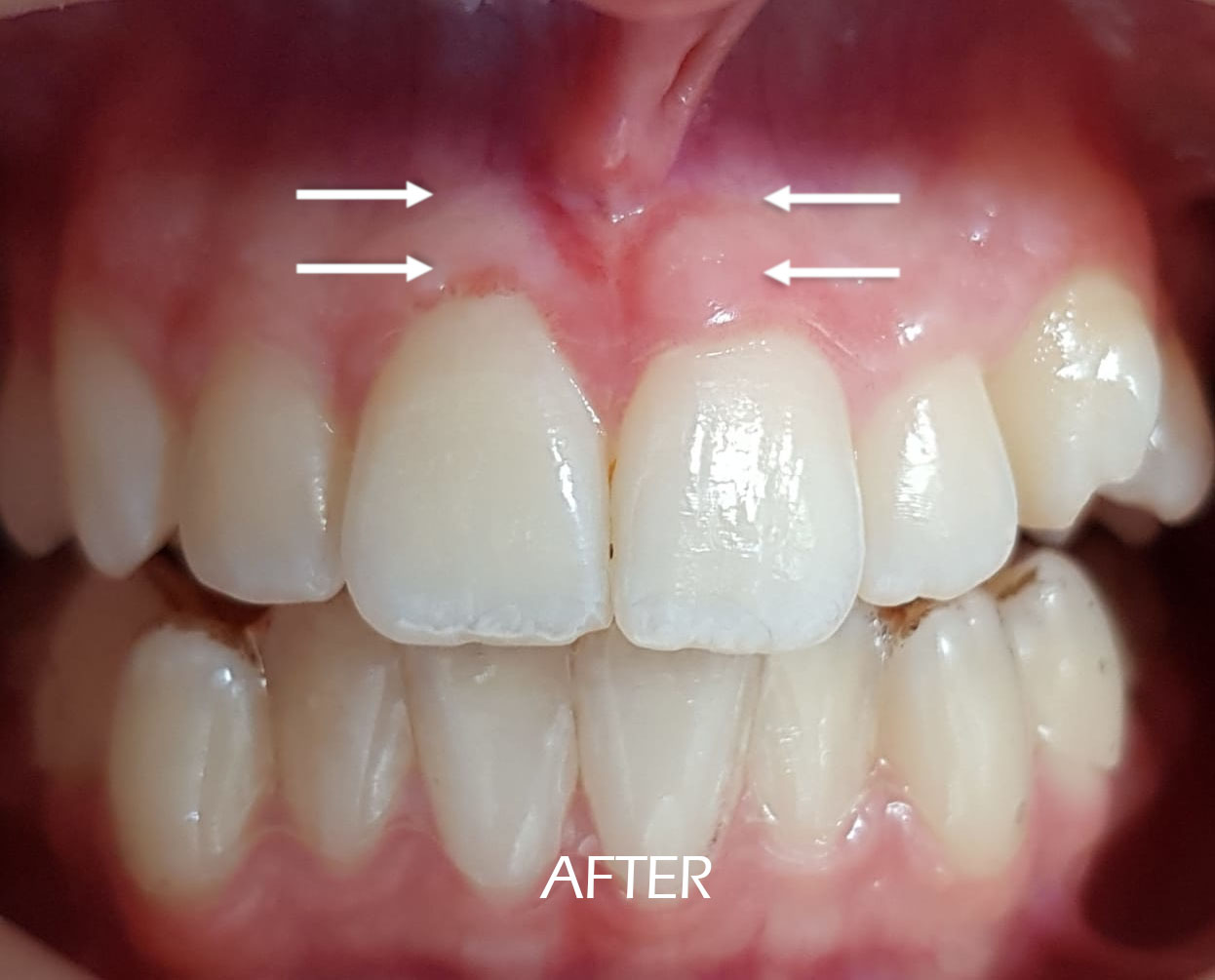Frenectomy: Improve Your Speech and Smile
Free Up Your Speech With Frenectomy!
Are you having speech difficulties due to a tongue tie?
Is the spacing between your upper front teeth, making you lose your confidence?
We might be able to provide you with the best solution! Spacing between upper front teeth can be due to many reasons like the thick frenum, the small size of your teeth, or the size of your jaw. Thick frenum of the upper lip or tongue has significant implications on speech and appearance. Hence, it is essential to correct it. We can correct the thick frenum by a procedure called frenectomy!
Before/After Frenectomy


Ready to get started?
Reach us now to schedule your consultation
Frequently Asked Questions on Frenectomy
What is a frenectomy?
Frenectomy is a surgical procedure usually performed under a local anesthetic that eliminates or loosens the tissue bands attached to the ear, cheek, or floor of the patient's mouth. It improves the movement of the tongue or can reduce the gap between the upper front teeth. Depending on the dentist operating, a frenectomy is performed by scalpel, electrosurgery, laser, or a combination of the three.
What are the types of frenectomy?
Three distinct forms of frenectomy are:
- Lingual frenectomy - This is the removal of a tissue band (lingual frenulum) that attaches the tongue's underside to the mouth floor. A lingual frenectomy is used to correct ankyloglossia (tongue-tie).
- Labial frenectomy - The labial frenulum is sometimes attached to the middle of the upper lip and between the upper two front teeth. This can trigger a large gum gap and a gum recession by pushing the gums out of the bone. A labial frenectomy removes the frenulum of the lips.
- Buccal frenectomy – For a buccal frenectomy, the thick or highly-placed tissue connecting the cheek and gums is removed. This will enable repositioning of the frenum and lesser interference with the denture.
What measures will be taken before the frenectomy?
Our dental team will record your medical history and X-rays (radiographs) to understand teeth and bone condition before undergoing the procedure. You should also provide information about the medication you are taking. This will enable us to recommend if you have to stop any medicines before the procedure.
What is frenum?
The frenum, also known as the frenulum, is a small ridge or fold of skin that anchors a semi-mobile portion of the body. Frenulums are present in the oral cavity, under the tongue, and on the lips' inner side.
Can frenectomy be performed with a laser?
Yes, a laser can be used to perform a frenectomy. Instead of using a scalpel, Dr. Adatrow uses a laser to remove the gum tissue. Laser frenectomy offers gentle, minimally invasive treatment solutions that are reliable and predictable. It results in less irritation, swelling, and bleeding. It might not even require sutures.
Why was I recommended frenectomy?
Dr. Adatrow will recommend you frenectomy if you have a thick frenum inside your lower lip or upper lip or under your tongue and restricts the movement of your tongue. As a result, it impacts your speaking abilities, chewing efficiency, oral hygiene, and the huge spacing in your upper front teeth.
What are the complications of having a thick frenum?
- Speech difficulty - having a thick frenum can restrict your tongue movements and impede your speech abilities
- Diastema – Diastema is the spacing between your upper front tooth. A thick frenum placed lower than its usual position would lead to the massive spacing between the upper front tooth.
- Mouth breathing – Limited lip movement leads to an open mouth posture, leading to mouth breathing.
- Decreased confidence – If you or your kid has speech difficulty or huge spacing between your upper front teeth, it will impact your confidence in the public.
- Unstable denture – If you have a thick or highly placed frenum, it will interfere with your denture stability.
When is frenectomy required?
A frenectomy is required in the following scenarios -
- When the lingual frenum is too long and stretches to the tip of the tongue, it may directly influence the tongue's function. A lingual frenectomy is required in this scenario.
- A large maxillary labial frenum, or attached close to the teeth, may create a gap between the two front teeth. A maxillary labial frenectomy has to be done to correct this situation.
How is frenectomy performed?
In most cases, the procedure is very straightforward. These are the general steps:
- Dr. Adatrow may use a topical anesthetic followed by a local anesthetic to numb any pain in the region.
- He will snip your frenum with a scalpel, surgical scissors, or a cauterizing device.
- If the tongue-tie is severe or more complicated, a few stitches may be required to close the incision.
- The entire process is likely to take 15 minutes or less from start to finish.
What are the types of frenum found in the oral cavity?
The frenum is a connective tissue membrane connecting one surface of the mouth to another. The three types of frena in the mouth are as follows:
- Lingual frenum – the vertical strip of thin tissue attaches the tongue to the bottom of the mouth.
- Labial frenum – a connective webbing that connects the lips to the gum above the top two front teeth and below the bottom two front teeth.
- Buccal frenum – thin threads of tissue linking the gums to the inside of the cheeks.
Am I eligible to undergo a laser frenectomy?
Laser treatment can be done for almost everyone except for severe periodontal disease or people with severe general health issues. Dr. Adatrow will assess your oral and medical health and recommend the optimal treatment for your condition.



